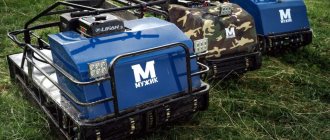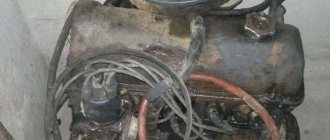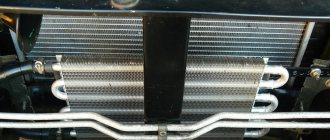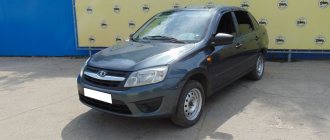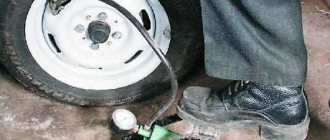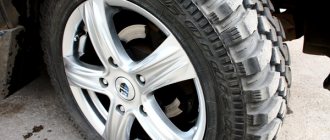There are also opponents of the method who completely reject all the arguments of its supporters. Their main argument is the well-known fact that air consists of 78% nitrogen, 21% oxygen and other gases. Question: why pump in an additional 15% nitrogen? It is unlikely that an additional volume of gas will be able to radically improve the performance characteristics of a car tire. Moreover, this service costs more.
Let's understand the situation, consider all the pros and cons of nitrogen in tires.
History of technology
In the automotive world, they started pumping nitrogen into tires quite a long time ago. True, this method was first used in the “royal” class of auto racing - Formula 1. However, like most other technologies, they are tested on race cars before manufacturers begin using them on production cars. In this case, an air-nitrogen mixture was used, rather than pure gas. The method was first used in the middle of the last century.
In the case of Formula 1, using this method provides at least one big advantage - increased safety. The fact is that if the car catches fire, the air from the burst tire acts as an oxygen supply, fueling the flame even more. If nitrogen is pumped into tires, this effect will no longer occur, meaning the risk of fire is reduced.
In the United States, nitrogen is used instead of air in tires in commercial vehicles. This is not a mandatory rule; many truck owners and carriers simply use alternative options.
In everyday life, cars are not often used to the limit of their capabilities, and fires occur very rarely. Therefore, it is not advisable to pump gas instead of air just for the sake of greater safety, but there are other advantages.
Does nitrogen affect blood pressure?
Any salesman will tell you that the thermal expansion of nitrogen is much lower than that of free air. Accordingly, according to the “nitrogen” theory, when the wheels heat up, the car will ride softer.
In fact, this is not even one deception, but two. Firstly, most often in the process of inflating tires with nitrogen, car dealership employees do not try very hard. As a result, the pressure is slightly lower (for example, if the pressure in a standard, freshly inflated tire is 2.25 atm, then after filling with nitrogen this figure can be 1.75 atm). Therefore, it is not surprising that the car seems to move more smoothly.
The second deception is that, according to at least two laws of physics, nitrogen pressure is directly proportional to temperature (therefore, when heated, the pressure cannot remain unchanged). In addition, this gas differs from oxygen by such insignificant percentages that only highly sensitive equipment can notice the difference. If you give real numbers, the comical nature of the deception becomes even more obvious. The coefficient of volumetric expansion of nitrogen gases is 0.003372 (1/K), and that of air is 0.003665 (1/K). Even if there is severe overheating in the wheel, the difference will be so negligible that not a single pressure gauge will be able to record it.
If this is not enough, then you can conduct an experiment:
- Take two cars with the same tires.
- Inflate the tires of one car with nitrogen and the other with air (the pressure should be the same, for example, 1.75 atm).
- Drive along the highway at 120 km/h to warm up the tires.
In a tire inflated with air, after 10-15 minutes the pressure will increase to 1.85 atm. But the funny thing is that during the experiment, nitrogen levels will also increase to 1.85 atm.
Interesting! For the sake of the experiment, let's put a glass of water on the roof of two identical cars and drive them. The same amount of liquid will flow out.
If you measure the temperature of the tires, the air will warm up by 8 degrees, and the nitrogen by 7. Again, the changes are almost the same. Only in the first case, inflating the tires did not cost anything, but when using nitrogen, you will have to pay about 200 rubles for just one tire.
Advantages of the method
Inflating tires with nitrogen has both supporters and opponents. Moreover, they are present among professionals, including owners of tire stations and service stations, and among amateurs. The advantages of the method include:
- no gas leakage - wheels flatten less;
- reduced wheel weight - lower fuel consumption;
- no tire overheating;
- increased security;
- stable tire pressure;
- slowing down the aging of rubber wheel elements;
No need to check tire pressure
Please note: Before starting a discussion of this item, we will give a recommendation - be sure to check the tire pressure before traveling, especially in winter.
Drivers who don't want to check their tire pressure may decide to pay to have nitrogen injected into their tires for peace of mind. However, this point is not entirely correct. If we turn to the physics of the process, most often the release of pressure occurs through microcracks.
Oxygen molecules have a size of 0.000000029 cm, and nitrogen molecules have a size of 0.000000031 cm. As you can see, the difference is not very significant. Accordingly, if you inflate tires with nitrogen, the likelihood of pressure bleed through microcracks will not decrease much. In addition, modern tubeless tires can hold pressure for years if there are no serious holes. Even if a tire gets punctured, the driver has the opportunity to get to a service station.
Bottom line: This advantage is nothing more than a “fairy tale for the lazy” who does not want to constantly check the tire pressure.
Reduced fuel consumption
This is one of the most common reasons for using nitrogen instead of air. Its essence boils down to the fact that the specified gas is lighter than air, and accordingly, less weight of the wheel will lead to lower fuel consumption.
To do this, you need to understand the real numbers. A cubic meter of air that is pumped into tires weighs 1.29 kg, and a cubic meter of gas weighs 1.25 kg. A standard passenger car wheel holds about 75 grams of pure gas and 77 grams of air mixture. Therefore, the difference between fully inflated wheels will be a few grams, which is negligible for significant fuel savings.
The difference is almost unnoticeable - dirt between the treads or pebbles add much more weight to the wheel.
Long tire life and reduced wheel corrosion
Perhaps this is one of the points that can really be substantiated. Proponents of nitrogen claim that when it is used instead of air, the disc does not rust inside, and the rubber itself is consumed less actively. Since oxygen is one of the main catalysts for oxidation, in its absence there is less chance of rust occurring inside the wheel. However, this plus is questionable, since the outside of the wheel is still exposed to oxygen and even a more aggressive environment - dirt, snow, rain, dust, and so on.
Please note: Modern disks “age” for a very long time, since they are made of an alloy of aluminum and magnesium.
Bottom line: When pumping nitrogen, you can keep the disk new on the inside, but rusty on the outside.
( 284 votes, average: 4.45 out of 5)
How to convert PSI pressure to atmospheres
Low profile tires: pros and cons
Related Posts
Popular tire models
- Yandex.Market rating: Yandex.Market: 4.5
Goodyear Eagle Sport TiresSeasonality: summer Spikes: no Diameter: 14 / 15 / 16
- Yandex.Market rating: Yandex.Market: 4.5
Goodyear EfficientGrip Performance Tires
Seasonality: summer Spikes: no Diameter: 15 / 16 / 17 / 18 / 19 / 20
- Yandex.Market rating: Yandex.Market: 4.5
Goodyear Eagle Sport TZ tires
Seasonality: summer Spikes: no Diameter: 16 / 17 / 18
- Yandex.Market rating: Yandex.Market: 5
Goodyear EfficientGrip Performance 2 Tires
Seasonality: summer Spikes: no Diameter: 15 / 16 / 17 / 18 / 19 / 20
- Yandex.Market rating: Yandex.Market: 4
Goodyear EfficientGrip 2 SUV Tires
Seasonality: summer Spikes: no Diameter: 16 / 17 / 18 / 19 / 20
- Yandex.Market rating: Yandex.Market: 4.5
Goodyear Wrangler All-Terrain Adventure tires with Kevlar
Seasonality: summer Spikes: no Diameter: 15 / 16 / 17 / 18 / 19 / 20
- Yandex.Market rating: Yandex.Market: 4.5
Goodyear Eagle Sport SUV TZ tires
Seasonality: summer Spikes: no Diameter: 17 / 18
- Yandex.Market rating: Yandex.Market: 4
Goodyear Wrangler HP All Weather Tires
Seasonality: summer Spikes: no Diameter: 15 / 16 / 17 / 18 / 19
- Yandex.Market rating: Yandex.Market: 4.5
Goodyear EfficientGrip SUV Tires
Seasonality: summer Spikes: no Diameter: 16 / 17 / 18 / 19 / 20 / 21 / 22
- Yandex.Market rating: Yandex.Market: 4.5
Tires Goodyear Eagle F1 Asymmetric 5
Seasonality: summer Spikes: no Diameter: 17 / 18 / 19 / 20 / 21 / 22
- Yandex.Market rating: Yandex.Market: 4
Goodyear Vector 4Seasons Gen-3 tires
Seasonality: all-season Spikes: no Diameter: 15 / 16 / 17 / 18 / 19
- Yandex.Market rating: Yandex.Market: 5
Goodyear Eagle F1 SuperSport Tires
Seasonality: summer Spikes: no Diameter: 18 / 19 / 20 / 21
- Yandex.Market rating: Yandex.Market: 4.5
Goodyear Eagle F1 Asymmetric 3 SUV tires
Seasonality: summer Spikes: no Diameter: 17 / 18 / 19 / 20 / 21 / 22
- Yandex.Market rating: Yandex.Market: 4.5
Goodyear Eagle F1 SuperSport R tires
Seasonality: summer Spikes: no Diameter: 19 / 20 / 21
- Goodyear Eagle F1 SuperSport RS Tires
Seasonality: summer Spikes: no Diameter: 21
How much does a weight cost?
We all know that a lost weight turns any car, no matter how comfortable and modern it is, into an ordinary gear crusher, shaking begins, and dynamic loads on the chassis and body increase sharply. The imbalance creates unbalanced centrifugal forces, which cause additional stress on the tires, chassis and body elements, leading to their accelerated wear. If the imbalance is not removed in time, then you can see a bald spot appear on the tire on the radially opposite side, the one from which the weight flew off. Here's to accelerated wear and tear and premature failure!!! But even if, after driving for a certain time with a fairly large imbalance, you still eliminate the cause of the vibrations, it will be practically impossible to change the situation - the tire is already fairly worn out, and its shape is already far from perfect.
Who would agree to ride on square wheels?! And this is almost equivalent to a lost weight. Consequently, such a tire (and among modern ones one can note, for example, safety tires with hard sidewalls, have an astronomical cost) has only one path left - the last one, to the landfill. But it could still be similar if the user had stopped by the workshop in time and balanced the wheel.
As we have already said, it is not only tires that wear out quickly. The dynamic loads caused by the imbalance are slowly destroying, including many elements of the chassis and body: bearings, shock absorbers, rubber-metal hinges, all kinds of pillows, and much, much more. Plus, turn the steered wheels relative to the turning axis. The direction of these accelerations and forces constantly changes relative to the axis of rotation, which causes vibrations that are transmitted to the steering wheel and to the car body. Thus, imbalance worsens not only stability, but mainly controllability, especially the car’s behavior when cornering. In addition, steering elements wear out faster.
Unfortunately, this is not so bad. We can safely say that a wheel or several wheels, which have a strong imbalance to one degree or another, literally turn the car into an uncontrollable flying projectile. So what's going on? An imbalance during movement causes a periodic change in the pressure of the wheel on the ground, which varies widely and depends on its “heaviness” and the speed of rotation of the wheel. As a result, the adhesion force of the tire to the road in the contact patch changes. When rotating, flying up, the “heavy” part of the wheel compresses the suspension spring - the traction force with the road decreases; moving downward it places excessive load on the tire (hence premature local wear).
But it becomes truly scary when the wheel, overcoming the elastic force of the spring, begins to periodically tear away from the road surface and hangs in the air for some, albeit negligible, period of time; add resonance to this phenomenon. Do you understand what this threatens? How to make a car follow a given trajectory in this situation is not an easy question. How would you like to brake with your wheels in the air? A car equipped with an anti-lock braking system will behave even worse when braking “pedal to the floor” in this situation than one not equipped with one. Here is a clear example of how all scientific and technological progress with all automatic microprocessor control systems has been reduced to nothing. And all because of some cheap weight. So it’s not just necessary to balance qualitatively, but necessary, and how!!!
After repair, installation or re-alignment, it is simply necessary to balance the wheels. By the way, it would be a good idea to carry out this operation every 10–15 thousand kilometers, and believe me, in this situation the tires will last longer.
Another interesting fact is that by balancing immediately after installing new tires, you can evaluate their quality. The more weights had to be mounted on the rim of the disk, the greater the imbalance of the wheel, and therefore the greater the deviation from the technology in the manufacture of either the disk or the tire. Next time, think about whether you should purchase such components.
Wheels flatten less
Stable pressure is another argument for fans to pump nitrogen into the wheel instead of regular air. In this case, the argument is the larger size of the gas molecule compared to the size of the oxygen molecule. Accordingly, oxygen seeps through microscopic cracks and holes in the tire faster. As a result, the pressure drops and the tire goes flat.
Yes it is. But do not forget that ordinary atmospheric air consists of 78% nitrogen, and only 21% oxygen. Therefore, when the pressure in the wheel drops, it is pumped up, thus adding even more nitrogen from ordinary air. After several years of operation, the wheel is almost completely inflated with gas alone.
Is there really no gas leak?
First of all, let’s remember school and that ¾ of the air consists of nitrogen (that is, 78%). In turn, car service centers and gas stations offer a mixture of 95% nitrogen and 5% oxygen. However, you can check the seller for honesty only if you take the gas from the tire to a laboratory. As a rule, according to the results of the study, it turns out that in the expensive mixture there is no 95% nitrogen, but only 84% of this gas and 16% oxygen. The difference between free air and the newfangled composition becomes even smaller (only 6%). Can a person or the tire itself notice it? Of course no.
But, after all, the car service claims that nitrogen molecules are much larger than those of oxygen, so they evaporate more slowly. Yes, the diameter of the nitrogen molecule is actually larger by as much as 6% (0.32 nm versus 0.30 nm). This means that if a tire into which nitrogen was pumped during the operation of the car loses 1 atm, then about 1.012 atm of air will come out. Another striking difference, which of course will affect handling, fuel consumption and how the driver feels.
Even if we assume that the oxygen is completely removed from the tire chamber, then pure and, most importantly, free nitrogen will remain in it. You can open your own tire workshop and sell it!
Air or nitrogen: other advantages, “imaginary” or obvious.
Nitrogen practically does not expand when heated, so the pressure in the wheel will remain constant as the temperature changes. In contrast to this statement, it is worth noting that more than three quarters of the air is nitrogen. Other gases also do not expand much, so the difference in pressure between tires filled with air or nitrogen when heated is not too great to be taken into account.
Proponents of the method argue that the absence of oxygen provides additional protection to the material from aging. Yes, this is a fair point, but does it make any practical sense? Rubber is exposed to other factors - aggressive environments, moisture, sunlight, and so on. All this does not contribute to extending the service life, but no one is going to use tires forever. There are certain temporary operating indicators on which the gas used does not have any significant impact.
A lower noise level is indicated by a tire into which pure gas is pumped rather than atmospheric air. Yes, through simple measurements at a speed of 100 km/h, the noise level in the first case is 65 dB versus 68 dB in the second. Is it good or bad? It's just not noticeable - a difference of 3 dB is absolutely insignificant.
A wheel filled with nitrogen is less likely to explode. In fact, the wheel will explode only if the car is used mercilessly, which occurs very rarely in ordinary life. Moreover, in fact, the wheel does not explode, but bursts - there is a sharp loss of pressure when the tire structure is destroyed. And this can happen when hitting an object or obstacle.
Also, you should not pay serious attention to the advice of those who recommend checking the pressure in the tire with nitrogen less. Checking should be done as often as the manufacturer recommends, and the number of checks does not depend on the type of mixture. How long a wheel “holds” is largely influenced by the composition of the rubber and its condition. A normal tire can hold pressure for years without damage.
But metal corrosion is more pronounced when air is used. The oxygen it contains is an oxidizing agent. It enters into a chemical oxidation reaction even at low temperatures, affecting the wheel and rubber. This statement can be attributed to the truly positive aspects of nitrogen injection.
Real and imagined benefits
To begin with, it’s worth listing all the advantages indicated on billboards near tire shops. What does the use of nitrogen in car cylinders provide, according to the service sellers:
- constant tire pressure regardless of ambient temperature and road surface;
- improved road grip and slower tread wear;
- the ride of the car becomes softer;
- tires do not go flat over time;
- reduction of braking distance and improvement of acceleration dynamics;
- the likelihood of tires exploding under load is noticeably reduced.
Next, it is proposed to analyze each point separately and determine the reliability of these statements, based on practical observations.
We recommend: Cleaning and washing the cabin filter - all the pros and cons
When the rubber heats up, the pressure does not increase
All drivers who pump their own tires know about the effect of thermal expansion of air in tires. The bottom line is this: when it warms up outside, the gas in the cylinders expands and the pressure in the wheels increases by 0.2–0.5 bar. And vice versa, after the onset of cold weather, the stingrays “sag.” Advertising claims: the coefficient of thermal expansion of nitrogen is 7 times less, so the tire pressure practically does not change.
Opponents of this theory rely on the laws of physics, according to which all gases expand equally. That is, the pressure difference in wheels inflated with nitrogen and an air mixture is negligible.
In practice, the situation is different: inflating tires with nitrogen actually allows you to keep the pressure at the same level regardless of the outside temperature. Probably, the presence of water vapor in the air, which is absent in a nitrogen environment, plays a role here (remember, the gas is dried before injection).
Improving the performance properties of rubber
The adhesion of the working surface of the wheel to the road surface depends on many factors, including:
- rubber properties, product quality;
- shape, pattern and design of the tread;
- the size of the contact patch and the distribution of forces in it;
- type and condition of the road surface.
The type of gas pumped into the tire does not have any effect on traction or tread wear. You can artificially change the pressure in the slopes and in this way increase or decrease the contact patch, but the contents of the cylinder do not matter. The statement is not true.
Smooth car ride
Another answer to the question why fill tires with nitrogen is as follows: a cylinder inflated with this gas is not as elastic as an air cylinder. As a result, the wheel bounces less off road unevenness, the ride becomes more comfortable, and the suspension lasts longer.
The argument is explained by the lower specific gravity of nitrogen compared to air, although in reality the difference is small. There is an interesting point here: the specific gravity of the air mixture is a variable value, depending on temperature and moisture content. If you pump in cold air at minus 20 °C, then the weight of 1 m3 is 1.396 kg, warm air (+10 °C) is 1.248 kg.
Practical observations have shown that a softer ride is felt when driving over small bumps on cars in the budget price category with a classic suspension. In business and premium class cars, the improvement in comfort is not felt, since they use an effective multi-link suspension.
The ramps don't come down
The advertisement says: a nitrogen molecule is larger than an air particle, so it does not “crawl” into the microcracks in rubber that inevitably form as a result of use on uneven roads. Therefore, the tires do not go flat for a long time and do not require inflation.
The statement falls into the category of absurd. The difference between air and nitrogen particles is so tiny (0.02 nanometers) that if a crack occurs, molecules of both gases will freely penetrate it. What happens in practice: over the same period of time, an “air” wheel loses 0.5 Bar, while a nitrogen-filled wheel loses 0.47 Bar.
Improved ride quality and safety
When tires are inflated with nitrogen, acceleration dynamics are improved and the braking distance of the vehicle is shortened. This argument is a logical consequence of the false statement about increasing road grip. This means that in reality, the acceleration and braking of the car remains unchanged, but the advantage is fictitious.
Driving safety is improved due to the fact that “nitrogen” ramps are less likely to explode. There is some truth in such conclusions: tires burst under heavy load and heat, causing the air pressure in the cylinder to increase to critical. Nitrogen is more tolerant of temperature increases and does not increase pressure, so rubber explodes less often.

